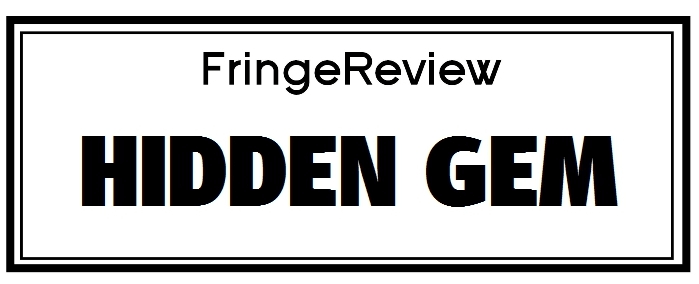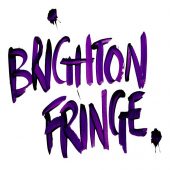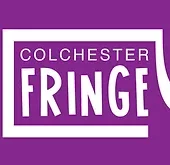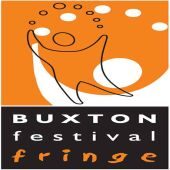Fringe Online 2021
Lone Flyer
Jermyn Street Theatre in Association with Watermill Theatre

Genre: Biographical Drama, Drama, Mainstream Theatre, New Writing, Online Theatre, Theatre
Venue: Jermyn Street Theatre and Online Footprints Festival
Festival: Fringe Online, FringeReview UK
Low Down
Directed by Lucy Betts for JST’s Footprints Festival. Originally designed by Isobel Nicholson and fitted here by Johanna Town, choregraphed by Hannah Edwards. Lighting by Johanna Town’s shadowy and narrational taken from Harry Armytage’s original lighting.Justin Teasdale’s Sound design including music is based on Jamie Kubisch Wiles and Thom Townsend at the watermill. Benedict Salter is also the live cellist. Camera work from several angles (Director Mark Swadel, Operator Balazs Weidner), including seventy-five degrees overhead, are deftly sequenced. Till July 3rd. Filmed and may be later available as stream.
Review
Zeppelin watching is an unusual way into a romance. Fourteen-year-old Amy Johnson gazing at ‘death sausages from Hell to Hull’ is fascinated and uninterested in bath-times, perching on the expensive new dresser, getting her front teeth knocked out playing boys at cricket, shy of exams and having a sister who could pose for Vanity Fair.
Hannah Edwards (also choreographer) and Benedict Salter (also cellist) star in Ade Morris’ Lone Flyer charts the real mapped course of Amy Johnson (1903-41) first woman pilot to fly solo from England to Australia in 1930. In their recent history JST has brought another Watermill production to its Footprints festival, and a fascinating, full-length two-hander.
We open with Edwards singing and she returns to lyric snatches throughout. Punctuating headlong career with sudden eddies of song to the cello line, then snatched away. Salter makes his cello buzz like an engine.
To Ravel’s Jeux d‘Eau we see Edwards’ navigate late adolescence, sexual desire and a longing to travel stimulated by a Swiss man who teaches her to smoke. And after passengering in a flying circus, flying herself.
Directed by Lucy Betts for JST’s Footprints Festival, Lone Flyer was originally designed by Isobel Nicholson there’s a trolley with raised ends and packing cases, and a change of costume and fitted here by Louie Whitmore, and choreographed by actor Hannah Edwards.
Lighting by Johanna Town’s shadowy and narrational taken from Harry Armytage’s original lighting – a thing of altimeter half-lights, near and total dark, and blinding light, as well as normative daylight. Justin Teasdale’s Sound design including music is based on Jamie Kubisch Wiles and Thom Townsend at the Watermill.
Edwards is completely inside this paradoxical, courageous defensively humorous and vulnerable pioneer. The writing too holds you – never entirely direct, but eddied like cross-winds. Salter takes on a gamut of characters and accents from Hull father and Swiss boyfriend to Scottish husband and London engineers and others.
It’s not entirely straight narration – we’re continually pushed forward to that last flight over the icy Thames in 1941, as Jonson contemplates her instruction never to turn back, bad instruments she’d warned about, no good at landings (several famous pilots weren’t) and her estranged husband and once instructor Jim Mollison irritated by calls from the Mail (we later learn Johnson hates it and all the other empire and right-wing adulation). She’s navigated to Australia, why bother over being a few hours overdue?
Continually counterpointing Johnson’s ground romances with her supportive father, the swiss mentee and later, and (leaping ahead to 1928) her learning to fly, we get shocks. Join the Civil service? She and her sister both suffer breakdowns from sheer boredom – her teacher sister abandons dreams of an actress and marries happily, for a while, doing cabaret acts with husband Teddy. Amy mopes. And her being the lover of a distant Catholic, Franz for two years means an ultimatum from her Methodist mother goes to work in knickers at Peter Jones, London in 1927. And then a chance to become a solicitor. A break-up later, other men, and that nagging feeling that undermines her promising career in law
The great strength of Morris’ narration is its sinewy following of the character’s emotional impulses, sudden spurts and eddies, one or two unselfish male friends (Jack and Winifred). Jack’s wholly supportive, takes Amy ‘Johnnie’ as an apprentice trainee engineer, and casually jokes about flying a new plane to Australia. ‘Johnnie’s famed as the first woman air engineer before almost immediately being pushed by Jack to see a place with ‘sand, sea, sheep…’ Then with Lord Wakefield’s sponsorship, two-thirds through the narrative, it takes off in a different way.
It’s the emotional journey rather than maps we get. And Johnson’s relationship with supportive Jack, who you feel she should have married if anyone and who later flew with her. There’s a sudden operation with consequences, another tour then a cruise, and Jim Mollison. ‘You look as if you’ve flown the Sahara non-stop’ she says to Jim, but it’s she who came down in one. An eight-hour romance and then many other record-chasings often elusive. ‘That trapeze act of risk and reward.’ There’s exhausting media exploitation, something so seemingly modern. And that final flight, imagining Jim’s advice, and her great fear, the sea. And using a parachute for the first time. The denouement’s based on the latest released material and is harrowing.
‘When we tell the stories of our lives, don’t you think it’s the story of our hearts we tell… It’s all there is. Better to have loved and lost.’
There’s been at least one BBC radio play, but this must be the definitive play about one of the most remarkable pioneers of her time, whose life and death are inherently dramatic but needing just this treatment, allowing for more complexity, conflicts and unexpected shafts of unselfish, even un-sexist generosity. An absorbing drama, absorbingly acted and produced.




























